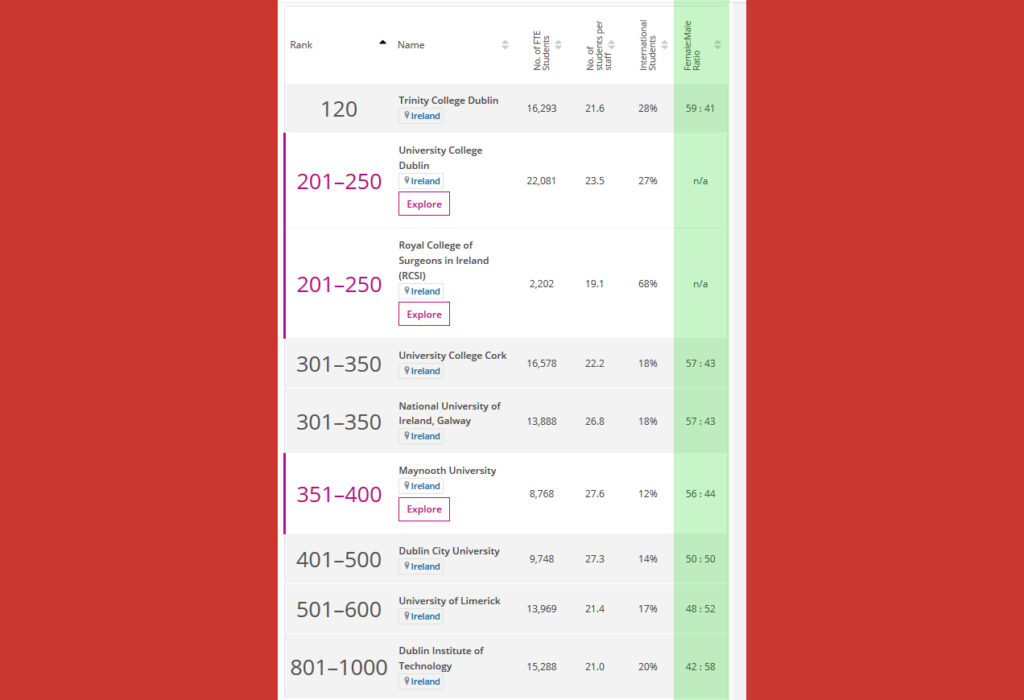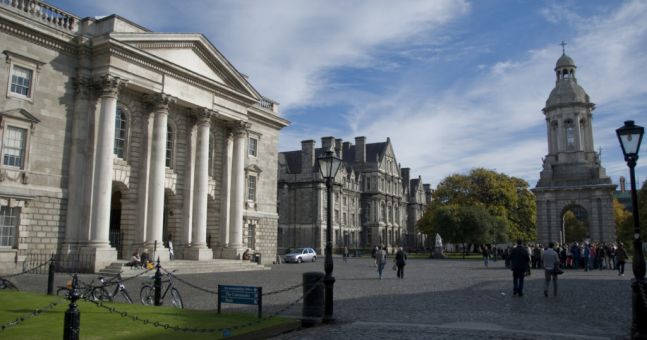The Times Higher Education are perhaps best known for two things: their insatiable desire to systematically categorise the top universities throughout the world according to various metrics and for having a name which fundamentally sounds as if it’s missing another word from the end of it.
While their second point of notoriety is admittedly of little interest to all save the most pedantic, it is around their prime focus with which we are concerned.
Last month they released their anticipated annual ranking of the top 1,000 higher level educational institutions in the world. Each of Ireland’s seven universities appeared in the rankings as well as RCSI and Ireland’s largest Institute of Technology, DIT – which is shortly to become a constituent part of Ireland TUD, one of Ireland’s new series of technological universities.
THE’s rankings are compiled from various metrics including the employability of each institution’s graduates, their reputation among other academic institutions as well as the quality of research and teaching – among other things. The top ranked university in Ireland remained for another year, Trinity College Dublin, which was ranked as the 120th best academic institution in the world. UCD came second followed by RCSI.
The rankings for Ireland’s universities are as follows:
- 120 – Trinity College Dublin
- 201-250 University College Dublin
- 201-25- Royal College of Surgeons in Ireland
- 301-350 University College Cork
- 301-350 National University of Ireland, Galway
- 351-400 Maynooth University
- 401-500 Dublin City University
- 501-600 Univeristy of Limerick
- 801-1000 Dublin Institute of Technology
However, in the information collated on each university, it inadvertently proffered forth an interesting statistic. It showed an interesting correlation between the placement of each of these academic institutions in the list and their ratio of female to male students. It shows that the greater the proportion of female students in these third-level institutions, the higher they rank in the list. DIT has the lowest ratio of female:male students at 42:58, while it increases directly with each more highly ranked university. While Trinity College has the highest female:male ratio at 59:41.

While this is not to say that correlation implies causation, namely that it is difficult to read anything into this beyond stating it as an observable fact, it is certainly a bizarrely consistent correspondence. Even beyond this trend, while the overall greater balance in gender ratios in Ireland’s universities may seem like an incredibly positive sign, there are still massive disparities within colleges and courses, with STEM subjects still being predominantly taken by male students and much still needs to be done to help bridge this gap.



















